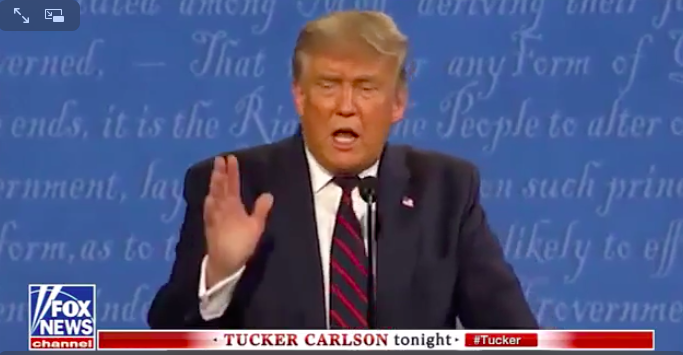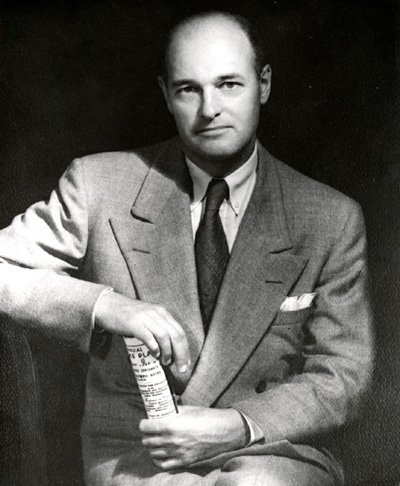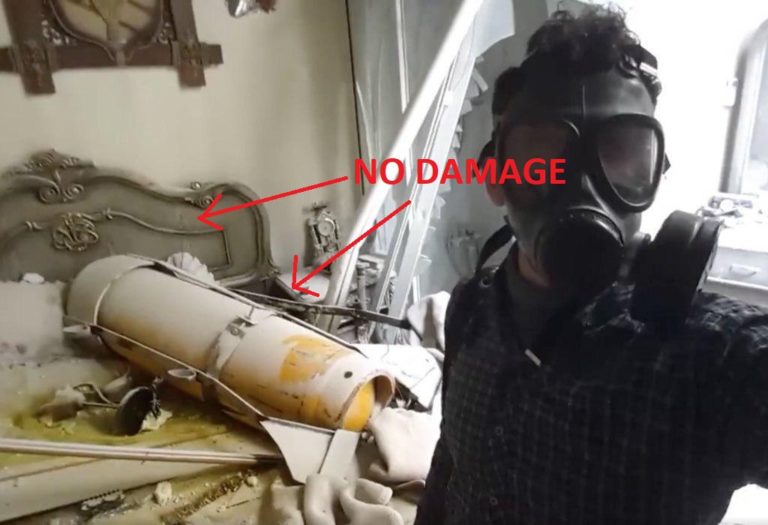The Covid Crisis: A Brief History of the Pandemics of the 21st Century (2000-2020)
October 7th, 2020 by Hans-Jürgen Steinhagen
First published on September 10, 2020
In times of great confusion and anxiety, when it feels like everything is going down the drain, like everyone is stumbling down a steep road, driven by a supposedly unstoppable disaster, it might be helpful to take a moment and a deep breath, to step aside and turn around. One might ask: What brought us here? What is the origin of this road? From where did we follow it? Who was sending us in this direction? Have we been here before? And, maybe even more important: Where will it lead us?
As the Spanish philosopher George Santayana wrote:
“Those who cannot remember the past are condemned to repeat it.”
In this sense, the following is meant as a chronology of some selected events of the last twenty years related to our current situation, some more or less known, some more or less forgotten.
CHRONOLOGY (2000 -2020)
2000
The Bill & Melinda Gates Foundation (founded in 1999), UNICEF, the World Health Organization (WHO) and the World Bank found the “Global Alliance for Vaccines and Immunization“, GAVI. The main goal of this PUBLIC-PRIVATE PARTNERSHIP (PPP) is to shape “healthy vaccine markets“. “GAVI brings together the vaccine industry with governments in both developing and industrialized countries, technical agencies, civil society and private PHILANTROPISTS.” In 1999, the Gates Foundation had pledged $ 750 million to set up GAVI and will make additional future donations of more than $ 4 billion until 2020.
March 15, 2003
Gro Harlem Brundtland, WHO Director-General, states in an alert about the “Severe Acute Respiratory Syndrome“: “This syndrome, SARS, is now a worldwide health threat. The world needs to work together to find its cause, cure the sick, and stop its spread.”
Note: SARS, “the FIRST Pandemic of the 21st Century“, caused by the coronavirus SARS-CoV, originated from China, lead to 8,096 reported cases of illness and 774 deaths worldwide.
Note: Later, in 2019, Brundtland will be co-chair on the “Global Preparedness Monitoring Board” (GPMB), when the SARS-CoV-2 outbreak begins.
November 11-12, 2004
An “Informal meeting on influenza pandemic vaccines” of WHO, influenza vaccine manufacturers, national drug licensing agencies and government representatives takes place in Geneva, Switzerland. The meeting’s goal is to “explore ways to expedite the development of pandemic vaccines“ by establishing PUBLIC-PRIVATE PARTNERSHIPS.
January 2005
As a result of the meeting in November the WHO publishes a report with the title “Avian influenza: assessing the pandemic threat“. The authors claim that “during 2004, the world moved closer to a further pandemic than it has been at any time since 1968.“ About the H5N1 bird flu virus: “NEVER BEFORE had any avian influenza virus caused such extremely high fatality in humans, taking its heaviest toll on children and young adults in the prime of life.”
Note: At this point, the bird flu has caused 50 cases in South-East-Asia during the years 2003 / 2004.
The report emphasizes the importance of vaccination during a pandemic. Under the heading “Vaccines: the first line of defence” it says: “WHO network laboratories developed a prototype virus, for use as the “seed” for vaccine production, and made it available to manufacturers in April 2004.
During pandemics, more severe disease tends to arrive with the SECOND WAVE. Should this happen, a few more months could be available to augment vaccine supplies. Each day gained means an additional 5 million doses of vaccine. Larger quantities of vaccine, supported by well-planned distribution strategies, will SAVE many LIVES.
Ideally, safety testing should be exceptionally extensive, but the pressure to manufacture RAPIDLY during a public health emergency is expected to shorten the time available for testing.”
The authors also recommend the use of the antiviral drugs Tamiflu (Roche) and Relenza (GlaxoSmithKline) for treatment and prevention: “… Drugs in the second and newer class, the neuraminidase inhibitors (oseltamivir and zanamivir), have a better safety profile and are less prone to the development of drug resistance. Here, the main constraints are price and supplies. The drugs are much more expensive than the M2 inhibitors and supplies are very limited.”
March 7, 2005
In an interview with the German news magazine SPIEGEL, Klaus Stoehr, virologist and leader of WHO‘s Global Influenza Program, is asked about the bird flu: “How dangerous will this pandemic be?” He replies:
“The pandemics in 1957 and 1968 were relatively mild with between 1 to 4 million dying in each. (…) Taking into account the increase in the world population since then, one would estimate that a mild pandemic would result in between 2 to 7 million deaths and a further 28 million hospitalized. Health care systems will be OVERWHELMED very QUICKLY .”
Note: Later Stoehr will become Vice President and Global Head of the Influenza Strategy Liaison for Novartis Vaccines, “…driving influenza based interactions with national and international authorities.”
August 3, 2005
Neil Ferguson, professor of mathematical biology at the Imperial College London, UK, warns THE GUARDIAN about the bird flu virus H5N1:
“What can we do if it hits our shores? We couldn’t stop it. There would be a constant number of NEW cases and we would be OVERWHELMED very RAPIDLY. (…) In just one year, half the world’s population – more than 3 billion people – would be infected.”
According to the article, Ferguson, other researchers and British government officials recommend to create a stock of millions doses of antiviral treatment and vaccines as a “first line of defence” against a catastrophic virus outbreak. “Currently the antiviral drug Tamiflu, made by Swiss-based pharmaceutical company Roche, stands the best chance of curbing pandemic bird flu. (…) Prof Ferguson said he understood Roche was prepared to make free donations of Tamiflu to the World Health Organization to help meet the threat.”
Note: In 2002 Ferguson had predicted 150.000 deaths in the UK from the Bovine spongiform encephalopathy (BSE), also known as the mad-cow-disease. During the following 16 years 178 persons died from BSE in the UK.
September 20, 2005
In an interview, published under the headline “H5N1 – KILLER Flu“, Antony Fauci, immunologist and director of the National Institute of Allergy and Infectious Diseases (NIAID) suggests that the US should buy at least 100 million vaccine doses.
“Well, that takes many months. It takes several months to do if you’re doing nothing else. And that’s the reason why one of the issues that comes up when you talk about pandemic flu, is that the vaccine development and production enterprise in this country and worldwide is very fragile.
… the vaccine industry is fragile. It is not a big money maker.”
September 29, 2005
WHO‘s Director-General for Health Action in Crises, David Nabarro, physician and newly appointed senior UN system coordinator for avian and human influenza (bird flu), states in a UN press conference:
“I’m not, at the moment, at liberty to give you a prediction on numbers, but I just want to stress, that, let’s say, the range of deaths could be anything from 5 to 150 million.”
Note: Following WHO’s recommendations and driven by panic about an expectable outbreak of a bird flu pandemic, governments worldwide started stockpiling antiviral drugs and vaccines for large parts of their populations.
September 30, 2005
Neil Ferguson is quoted in an article in THE GUARDIAN: “Last month Neil Ferguson, a professor of mathematical biology at Imperial College London, told Guardian Unlimited that up to 200 million people could be KILLED (Note: by the bird flu).”
“Around 40 million people died in 1918 Spanish flu outbreak,” said Prof Ferguson. “There are six times more people on the planet now so you could scale it up to around 200 million people probably.”
Note: Between 2003 and 2009 worldwide 282 people died from the bird flu.
2006
Warren Buffett, US American business tycoon and Philanthropist, pledges $ 37 billion (85% of his fortune) to the Bill and Melinda Gates Foundation.
November 26, 2006
Warren Buffett is quoted in the NEW YORK TIMES: “There’s class warfare, all right, but it’s my class, the rich class, that’s making war and We’re winning.”
April 24, 2009
WHO announces an outbreak of human cases of H1N1, the swine flu, confirmed in Mexico and the USA.
April 27, 2009
The first two UK cases of H1N1 are confirmed in a couple from Scotland, WHO raises its alert level to Phase 4.
April 29, 2009
British PM Gordon Brown announces that the stockpile of antivirals will be increased from 33.5 to 50 million.
Note: The UK government spent £ 424 million on flu drug Tamiflu, the US government spent $ 1.3 billion on stockpiling 65 million dosages. Global sales of Tamiflu is estimated at almost $ 3 billion at the height of the swine flu pandemic.
May 4, 2009
On WHO‘s website, the criteria for a pandemic
“An influenza pandemic occurs when a new influenza virus appears against which the human population has no immunity, resulting in several simultaneous epidemics worldwide with enormous numbers of deaths and illness.” are altered.
The new definition is: “An influenza pandemic may occur when a new influenza virus appears against which the human population has no immunity.” For the declaration of phase 6 (the highest level, the pandemic) the presence of several simultaneous epidemics and high death numbers are no longer necessary.
Note: Later Andrej Hunko, German MP, will say in a speech at the Parliamentary Assembly of the Council of Europe on 24.06.2010:
“Here I have secret contracts that were signed in Germany between GlaxoSmithKline and the German state. As a simple Member of Parliament, officially I am not allowed to view these contracts. They were posted on the Internet by whistleblowers in Germany.
These contracts specify exactly what needs to happen when phase 6 is announced: what amounts of vaccine doses the states have to buy, etc.. Such contracts were concluded by most states before the criteria have been changed.”
June 11, 2009
WHO‘s Director-General Margaret Chan declares the swine flu pandemic:
“This particular H1N1 strain has not circulated previously in humans. The virus is entirely new (…) Further spread is considered inevitable. On the basis of available evidence, and these expert assessments of the evidence, the scientific criteria for an influenza pandemic have been met. I have therefore decided to raise the level of influenza pandemic alert from phase 5 to phase 6. The world is now at the START of the 2009 influenza pandemic.
WHO has been in close dialogue with influenza vaccine manufacturers. I understand that production of vaccines for seasonal influenza will be completed soon, and that full capacity will be available to ensure the largest possible supply of pandemic vaccine in the months to come.”
Note: Under enormous pressure (and because of the existing contracts) governments bought millions of vaccine doses. Germanyfor example, bought 34 million doses for € 280 million. Only 14% were used, the rest had to be disposed as hazardous waste at high costs.
July 16, 2009
Based on Neil Ferguson‘s advice, the British government warns about the swine flu that “in the worst case scenario 30% of the UK population could be infected by the H1N1 virus, with 65,000 Killed.”
Note: Eventually, the swine flu killed 457 people in the UK.
December 18, 2009
The Parliamentary Assembly of the Council of Europe (PACE) publishes a motion for a recommendation with the title “Faked Pandemics – a Threat for Health“.
The document states about the “birds-flu-campaign (2005/06)” and the “swine-flu-campaign (2009/10)”:
“In order to promote their patented drugs and vaccines against flu, pharmaceutical companies have influenced scientists and official agencies (…) to alarm governments worldwide. They have made them squander tight health care resources for inefficient vaccine strategies and needlessly exposed millions of healthy people to the risk of unknown side-effects of insufficiently tested vaccines.”
The authors also see “a great deal of damage“ for the “credibility and accountability of important international health agencies”. Meant is the WHO: “The definition of an alarming pandemic must not be under the influence of drug-sellers.”
January 2010
Exactly 10 years before the outbreak of the “pneumonia of unknown etiology” in Wuhan, Bill Gates calls for a “DECADE of Vaccines” and pledges $ 10 billion to the WHO for this purpose.
February 2010
In a TED talk Bill Gates says:
“First, we‘ve got population. The world today has 6.8 billion people. That’s headed up to about nine billion.
Now, if we do a really great job on new vaccines, health care, reproductive health services, we could lower that by, perhaps, 10 or 15 percent.”
May 2010
The Rockefeller Foundation publishes “Scenarios for the Future of Technology and International Development“. The report predicts four different possible future scenarios. In one of them, called “LOCK STEP“,
“…the pandemic that the world had been anticipating for years finally hit. Unlike 2009’s H1N1, this NEW influenza strain (…) was extremely virulent and deadly. Even the most pandemic-prepared nations were QUICKLY OVERWHELMED when the virus streaked around the world, infecting nearly 20 percent of the global population and KILLING 8 million in just seven months.
The pandemic also had a deadly effect on economies: international mobility of both people and goods screeched to a halt, debilitating industries like tourism and breaking global supply chains.
The Chinese government’s quick imposition and enforcement of mandatory quarantine for all citizens, as well as its instant and near-hermetic sealing off of all borders, SAVED millions of LIVES, stopping the spread of the virus far earlier than in other countries.
During the pandemic, national leaders around the world flexed their authority and imposed airtight rules and restrictions, from the mandatory wearing of FACE MASKS to body-temperature checks at the entries to communal spaces like train stationsand supermarkets. Even after the pandemic faded, this more authoritarian control and oversight of citizens and their activities stuck and even intensified.
Citizens willingly gave up some of their sovereignty – and their privacy – to more paternalistic states in exchange for greater safety and stability. Citizens were more tolerant, and even eager, for top-down direction and oversight, and national leaders had more latitude to impose order in the ways they saw fit. In developed countries, this heightened oversight took many forms: BIOMETRIC IDs for all citizens, for example…”
June 7, 2010
PACE, the Parliamentary Assembly of the Council of Europe publishes the report “The handling of the H1N1 pandemic: more transparency needed“. The report criticizes
“possible influence of the pharmaceutical industry on some of the major decisions relating to the pandemic.
The way in which the H1N1 influenza pandemic has been handled, not only by WHO, but also by the competent health authorities at the level of the European Union and at national level, gives rise to alarm. Some of the consequences of decisions taken and advice given are particularly troubling, as they led to distortion of priorities of public health services across Europe, waste of large sums of public money and also unjustified scares and fears about health risks faced by the European public at large.”
August 10, 2010
The Director-General of WHO, Margaret Chan, declares the end of the influenza (H1N1) pandemic.
Note: The swine flu killed 18.500 people worldwide. For comparison: the seasonal flu 2017 / 2018 killed 25.000 in Germany alone.
December 2, 2010
WHO, UNICEF, US’s National Institute of Allergy and Infectious Diseases (NIAID) and the Gates Foundation announce the “DECADE of Vaccines Collaboration“, a partnership to increase coordination across the international vaccine community and create a “Global Vaccine Action Plan” (GVAP).
“The collaboration follows the January 2010 call by Bill and Melinda Gates for the next ten years to be the Decade of Vaccines. The Global Vaccine Action Plan will enable greater coordination across all STAKEHOLDER groups – national governments, multilateral organizations, civil society, the private sector and Philanthropic organizations.”
Note: Among others, the Leadership Council is comprised of Margaret Chan and Anthony Fauci, Director of NIAID, part of the National Institutes of Health (NIH). The Steering Committee includes (among others) Seth Berkley, President & CEO, International AIDS Vaccine Initiative (IAVI).
September 2012
The “Better Than Cash Alliance” is launched by the UN Capital Development Fund, the United States Agency for International Development, the Gates Foundation, Citigroup, the Ford Foundation, the Omidyar Network, and VISA. The global PUBLIC-PRIVATE PARTNERSHIP consisting of companies, international organizations and 25 (mostly developing) countries, aims to “accelerate the transition from cash to DIGITAL PAYMENTS.”
April 10, 2014
The international network of researchers, Cochrane, provider of “evidence-based informations to make health decisions”, publishes a systematic review about neuraminidase inhibitors (NIs) like Tamiflu. The researchers were also able to use previously secret studies conducted by the manufacturers.
The review found that
“while oseltamivir and zanamivir have small, non‐specific effects on reducing the time to alleviation of influenza symptoms, oseltamivir (Tamiflu) increases the risk of adverse effects, such as nausea, vomiting, psychiatric effects and renal events in adults and vomiting in children, and both drugs do not reduce the important outcomes such as pneumonia and hospitalizations.”
January 17-20, 2017
World Economic Forum (WEF) Annual Meeting in Davos, Switzerland. Official announcement of the foundation of the “Coalition for Epidemic Preparedness Innovations” (CEPI), a global partnership to “develop vaccines to stop future epidemics“ by the Gates Foundation, Wellcome Trust, WEF and the governments of Norway and India.
February 8, 2017
The government of India cuts all ties with Gates Foundation on immunization, after scientists blamed the Gates-funded polio vaccination campaign for almost half a million cases of childhood paralysis. From an article of the INDIAN JOURNAL OF MEDICAL ETHICS: “During the last five years, globally, cases of polio caused by vaccine viruses have outnumbered those of polio caused by natural (wild) polioviruses“.
July 2017
WHO downgrades the status of Tamiflu from a “core” drug to a “complementary” drug. At this point, Roche‘s Tamiflu has generated over $18 billion in sales worldwide, half of it from governments stockpiling the drug.
November 13, 2017
Seth Berkley, CEO of GAVI and board member of ID2020, publishes his article “Immunization needs a technology boost” in the science magazine NATURE. Berkley emphasizes the importance of digital tracking of children who receive vaccines in order to provide “a full course of a vaccine regime“ to 100% of “infants living in the world’s 73 poorest countries” and to “ensure that everyone has a legal identity by 2030.”
January 23, 2018
WEF‘s report “The Known Traveller – Unlocking the potential of DIGITAL IDENTITY for secure and seamless travel” is published in consultation with Accenture, the Government of Canada, Google, Interpol, the Kingdom of the Netherlands, Marriott International, UK National Crime Agency, US Department of Homeland Security, VISA and others.
The “Known Traveler Digital Identity” (KTDI) website claims that KTDI
“brings together a global consortium of individuals, governments, authorities and the travel industry to enhance security in world travel. (…) KTDI allows individuals to manage their own profile and collect DIGITAL ‘ATTESTATIONS’ of their personal data, deciding what data to share and when. The more attestations a traveller accumulates and shares, the better consortium partners, governments and other parties can provide a smooth and safe travel experience.”
Note: Conversely, this could imply that a person unwilling to share data might have to face a hard time in an attempt to travel.
January 25, 2018
At the 48th World Economic Forum‘s Annual Meeting in Davos, Switzerland, several “STAKEHOLDERS” from finance, business, tech companies, foundations and international organizations call to unite in a global PUBLIC-PRIVATE PARTNERSHIP in order to push along the idea of a “DIGITAL IDENTITY for everyone“. Among them: ID2020, World Bank, Barclays, Deutsche Bank, Mastercard, Visa, Microsoft, Accenture, Consumers International, Omidyar Network, FIDO Alliance, GSMA, Hyperledger, Open Identity Exchange, World Identity Network, sedicii, World Food Programme and the UNHCR.
Derek O’Halloran, WEF:
“Digital identities and access systems are foundational elements of our shared digital future. They offer tremendous opportunities for individuals and society, especially for those without formal ID.”
The Government of Canada announces that it will pioneer the testing of the KTDI prototype system together with the with the Kingdom of the Netherlands to “explore opportunities for demonstrating the potential of digital identity systems to engender trust and cooperation between international partners.”
April 18, 2018
At the Malaria Summit in London Bill Gates says: “The world needs to prepare for pandemics in the same serious way it prepares for WAR.”
September 25, 2018
At the “Sustainable Development Impact Summit 2018” in New York, USA, the WEF is announcing the launch of a shared platform for “Good Digital Identity“. Good DIGITAL ID is supposed to provide “access to digital services, enabling personalization, customer loyalty, increased security and reduced costs. Innovative customer services are possible: telemedicine and digital prescriptions, gig economy, more fluid workforce, DIGITAL BANKING via devices in the internet of things (IoT), digital transformation of supply chains and the provision of government services.”
November 18, 2018
Billionaire Media Mogul and former mayor of New York City, Michael Bloomberg donates $ 1,8 billion to the Johns Hopkins University, the largest donation on record to an American academic institution.
September 12, 2019
“Global Vaccination Summit“, Brussels, Belgium. Organized by the European Commission and the WHO, the event‘s overall objective is to “demonstrate EU leadership for global commitment to vaccination, boost political commitment towards eliminating vaccine preventable diseases and engage political leaders and leaders from scientific, medical, industry, PHILANTROPIC and civil society in global action against the spread of vaccine MISINFORMATION.”
The summit’s synopsis
“Ten Actions Towards Vaccination For All” complains that “vaccine shortages, misinformation, complacency towards disease risks, diminishing public confidence in the value of vaccines and disinvestments are harming vaccination rates worldwide.”
September 19, 2019
At the annual summit of the ID2020 Alliance in New York, USA, the “Good Digital ID” project named “Access to Information Cooperation“ (a2i) is announced, run by ID2020, GAVI and the Government of Bangladesh. “Recognizing the opportunity for immunization to serve as a platform for DIGITAL IDENTITY, this program leverages existing vaccination and birth registration operations to offer newborns a persistent and portable biometrically-linked digital identity.”
Note: Immunization means vaccination.
September 24, 2019
António Guterres, UN‘s Secretary General, calls on all sectors of society to mobilize for a “DECADE of Action to deliver the Global Goals“.
October 18, 2019
Event 201, a high-level pandemic exercise takes place in New York, USA. Organized by the Johns Hopkins University, the World Economic Forum and the Gates Foundation, the exercise simulates a pandemic outbreak of a NEW coronavirus from the SARS family. Purpose of the exercise is to show that only with the help of PUBLIC-PRIVATE PARTNERSHIPS the states will be able to face the next severe pandemic(s) without catastrophic loss of lives and economic destruction.
The participants (“players“):
- Brad Connet, President of Henry Schein’s U.S. Medical Group
- Adrian Thomas, Vice President Global Public Health at Johnson & Johnson
- Christopher Elias, President of the Global Development Program of Gates Foundation, adviser of the U.S. CDC (Center for Disease Control and Prevention)
- Tim Evans, formerly World Bank Group, WHO, Rockefeller Foundation, co-founder of GAVI
- Avril Haines, formerly Deputy Director CIA
- Jane Halton, later member of Australia’s COVID-19 Coordination Commission in March 2020
- Matthew Harington, CEO of Edelman, the world’s biggest PR and marketing consultancy firm
- George Fu Gao, Director-General, Chinese Center for Disease Control
- Steven Redd, Incident Commander of CDC’s swine flu response (including vaccination of 81 million US citizens) in 2009 / 2010.
- Sofia Borges, Vice President of the UN foundation
- Hasti Taghi, Vice President & Executive Advisor, NBCUniversal Media
- Eduardo Martinez, WEF’s “Managing the Risk and Impact of Future Epidemics Steering Committee. Dr. Martinez also serves on the UN Global Logistics Cluster’s Logistics Emergency Team Steering Council (…) and he serves on the Executive Committee of IMPACT 2030, a business-led coalition to advance the UN’s Sustainable Development Goals and on the Board of UN’s public-private sector coalition innovation incubator, Global Humanitarian Lab.”
- Latoya Abbott, Marriott International
- Martin Knuchel, Lufthansa Group
- Lavan Thiru, “Monetary Authority” of Singapore
“In this NEW ERA of extreme pandemic threat, public-private cooperation is essential for an effective response.” said Tom Inglesby, Director of Center for Health Security, Hopkins Bloomberg School of Public Health. “While governments and public health systems are already strained due to the increase in dangerous outbreaks, experts agree that a severe, fast-spreading human-to-human pandemic incident could happen at any time.”
Note: Tom Inglesby, Christopher Elias and George Fu Gao are, together with Antony Fauci and Jeremy Farrar (Director Wellcome Trust) board members of the “Global Preparedness Monitoring Board” (GPMB), the “joint forces” of WHO and World Bank.
Michael Ryan, Executive Director of WHO‘s “Health Emergencies Programme“, stated in his introduction:
“I don’t think we have ever been in the situation where we have had to respond to so many health emergencies at once. This is a NEW NORMAL.”
According to the event’s scenario, the number of cases would increase exponentially, because the whole human population is vulnerable. Until the end of the pandemic 18 months later, when a vaccine is available, the disease will cause 65 million deaths.
One segment of the exercise deals with “MISINFORMATION and disinformation“. From the fact sheet “Communication in a Pandemic“:
“Disinformation campaigns are widely recognized in the political world but have been identified in the public health realm as well. In the fall of 2018, a team of researchers systematically identified a concerted effort to spread disinformation and discord about vaccine safety.
More than 50 countries globally have taken different government-led actions that, in theory, aim to combat misinformation. These actions can range from media literacy campaigns and fact-checking websites to more extreme measures, such as jailing users for publishing content deemed to be misinformation. In some cases, authorities have shut down social media sites or the internet entirely.
Misinformation and disinformation are likely to be serious threats during a public health emergency. Unfortunately, thus far, there are limited ways to control the propagation of misinformation, leading to potentially draconian methods to manage this problem.”
Note: Later, the European Commission will state on its website:
“MISINFORMATION and disinformation in the health space are thriving, including on COVID-19. It is important that you rely only on authoritative sources to get updated information on the COVID-19 outbreak.
WE suggest that you follow the advice of your public health authorities, and the websites of relevant EU and international organizations: ECDC and WHO. You can also help by not sharing unverified information coming from dubious sources. The fight against coronavirus misinformation and disinformation SAVES LIVES.”
November 2019
The Robert Koch Institute (RKI), Germany’s national public health institute, receives a $ 253,000 donation from the Gates Foundation.
November 20, 2019
After a prioritized procedure, the European Patent Office grants a patent on a genetically modified coronavirus. Patent claim #5: “The coronavirus (…) is an infectious bronchitis virus (IBV), preferably IBV M41.”
Patent holder: the Pirbright Institute in Surrey, England. Major STAKEHOLDERS (among others): the WHO, the European Commission and the Gates Foundation.
December 1, 2019
China‘s new “Law on Vaccine Administration” comes into effect. According to the law, China is to implement a state immunization program, and residents living within the territory of China are legally obligated to be vaccinated with immunization program vaccines, which are provided by the government free of charge. Local governments and parents or other guardians of children must ensure that children be vaccinated with the immunization program vaccines.
An electronic information system will be set up to make all information of vaccines trackable, such as production and package information of vaccines, period of validity, date of vaccination, medical workers who conduct the vaccination and the recipients.
The law introduces a compensation system for cases of adverse events leading to death, serious disability or organ damage during or after vaccination. For mandatory vaccination, the compensation must be paid through local fiscal budgets, while for voluntary vaccination, the vaccine license-holder must shoulder the responsibility.
December 18, 2019
Researchers at the Massachusetts Institute of Technology (MIT) announce the development of a “NOVEL way to record a patient’s vaccination history“, using smartphone-readable nano-crystals called “quantum dots” embedded in the skin using micro-needles. “The work was funded by the Gates Foundation and came about because of a direct request from Microsoft founder and Philanthropist Bill Gates himself.”
December 31, 2019
Wuhan Municipal Health Commission, China, reports a cluster of cases of pneumonia to the WHO.
January 11, 2020
China publicly shares a draft of the genetic sequence of the “Wuhan virus”.
January 13, 2020
Tedros Adhanom Ghebreyesus, WHO Director General, states:
“WE face shared threats and WE have a shared responsibility to act. With the deadline for the 2030 Sustainable Development Goals QUICKLY approaching, the United Nations General Assembly has underscored that the next 10 years must be the “DECADE of Action“.
Declared goals (among others): “Expanding access to medicines”, “Stopping infectious diseases”, “Preparing for epidemics”, “Earning public trust”, “Harnessing NEW technologies”, “Protecting the medicines that protect us“.
January 16, 2020
The Charité university in Berlin, Germany, announces the successful development of a test for the Wuhan virus, based on the Chinese researchers’ description of the virus’ genetic sequence:
“The coronavirus, which first emerged in Wuhan, China, and can cause severe pneumonia, can now be detected in the laboratory. Developed by a group of DZIF researchers working under the leadership of Prof. Dr. Christian Drosten, Director of the Institute of Virology on Campus Charité Mitte, the world’s first diagnostic test for the coronavirus has now been made publicly available. Following its online publication by the WHO, the test protocol will now serve as a guideline for laboratories. An international consortium is currently conducting a joint evaluation study.”
Note: Drosten was also the first to develop tests for SARS-CoV (2003), bird flu (2005), swine flu (2009), Chikungunya virus(2009), MERS (2012), ZIKA (2016) and yellow fever in Brazil (2017).
Note: The PCR tests that will be developed later, based on this invention, are not approved for diagnostic use. The instruction manual of “RealStar” by Altona Diagnostics: “For research use only! Not for use in diagnostic procedures.” “Multiplex RT-qPCR Kit” of Creative Diagnostics: “This product is for research use only and is not intended for diagnostic use.” The product announcement of the “LightMix Modular Assays” by Roche: “These assays are not intended for use as an aid in the diagnosis of coronavirus infection. For research use only. Not for use in diagnostic procedures.”
January 16, 2020
Germany joins the “1+Million Genomes Initiative“. German Research Minister Anja Karliczek and Health Minister Jens Spahn sign the declaration “Towards access of at least 1 million sequenced genomes in the EU by 2022” in Berlin. The aim of the initiative is to enable “safe and regulated access to at least one million complete genome sequences and other health data across national borders.”
January 21-24, 2020
At its 50th Annual Meeting in Davos, Switzerland, the World Economic Forum celebrates “STAKEHOLDERS for a Cohesive and Sustainable World“ and “Defining the DECADE of Delivery“.
January 22-23, 2020
Meeting of the WHO Emergency Committee in Geneva, Switzerland.
From the statement about the meeting:
“The Committee’s role is to give advice to the Director-General, who makes the final decision on the determination of a Public Health Emergency of International Concern (PHEIC).
Several members considered that it is still too early to declare a PHEIC, given its restrictive and binary nature. Based on these divergent views, the EC formulates the following advice: To WHO – The Committee stands ready to be reconvened in approximately ten days’ time, or earlier should the Director-General deem it necessary.”
January 29, 2020
The Institut Pasteur, which is responsible for monitoring respiratory viruses in France, sequenced the whole genome of the coronavirus known as “2019-nCoV”, becoming “the first institution in Europe to sequence the virus since the START of the outbreak”.
February 11-12, 2020
WHO holds a “Research and Innovation Forum” on COVID-19 in Geneva, Switzerland, attended by more than 400 experts and funders from around the world, which included presentations by George Fu Gao, Director General of China CDC.
The meeting was hosted in collaboration with “Global Research Collaboration for Infectious Disease Preparedness” (GloPID-R), a global network, launched in Brussels, Belgium, in February 2013. The members: Gates Foundation, Wellcome Trust, numerous international governmental organizations, the European Commission (secretariat) and, as observers, the WHOand CEPI.
The network’s mission: “GloPID-R is the only alliance of its kind to bring together research funding organizations on a global scale to facilitate an effective and rapid research of a significant outbreak of a NEW or re-emerging infectious disease with epidemic and pandemic potential.”
February 12, 2020
HEALTHINSIGHT UK’s article “Coronavirus: a reliable test is badly needed. We don’t have one“ talks about the Canadian Scientist David Crowe:
“Crowe describes the current response as a ‘rush to judgement, based on the rapid application of an unproven test, made worse by the use of powerful unproven drugs with toxic side-effects on those who test positive.’
False positives are dangerously misleading. For instance, even if an epidemic began to die out, public health officials would still be getting positive results from an unreliable test and insist that the epidemic was still a threat. Testing all of Wuhan’s 10 million inhabitants with a 99% accurate test would give you 100,000 false positives.
The original WHO guidelines for diagnosing 2019 Coronavirus said that a positive test was all that was needed. The person didn’t need to have symptoms or to have had recent contact with someone who was infected.”
Crowe about Chinese government’s new way of counting: “Now cases that were diagnosed without symptoms are being removed from the record of new cases if they don’t develop them. A recognition of the failings of the test that should make infection figures more realistic.
With the unreliable test, however, uninfected healthy people may be treated with toxic drugs, and unhealthy people, sick for some other reason, may also be treated with inappropriate drugs. Isolation, and other medical procedures such as invasive ventilation, also have their own side effects. This means that we cannot distinguish the dangers of testing positive from the dangers of the virus.”
February 27, 2020
From an article published in the German medical journal AERZTEBLATT: “According to the Robert Koch Institute (RKI), the NOVEL coronavirus Sars-CoV-2 is more deadly than the flu. The likelihood of dying from flu is 0.1 to 0.2 percent, said RKI President Lothar Wieler today.
According to the figures known to date, the rate for the Sars-CoV-2 virus is almost ten times higher – at one to two percent. Eighty percent of those infected had mild symptoms, but 15 percent were seriously ill with Covid-19 lung disease. “That’s a lot,” said Wieler.”
February 29, 2020
The Robert Koch Institute (RKI) is Germany’s national public health institute in the field of surveillance, control and prevention of diseases. It “evaluates, analyses and researches diseases that are very dangerous or very prevalent or of increased public or health-related political significance.”
RKI’s Arbeitsgemeinschaft Influenza (AGI) (Influenza Working Group) has established a so-called sentinel system, a representative network of doctor’s offices from allover the country (including more than 1% of Germany’s primary care physicians), who report their cases of acute respiratory diseases and send samples to the AGI to be tested for viruses. Since 2009, AGI publishes weekly reports about virus activities during the flu season.
From this day on, AGI will also examine the samples for SARS-CoV-2 viruses, with validated, officially approved tests.
March 2020
German Charité university receives a donation of almost $ 250,000 from the Gates Foundation. Purpose: “To develop diagnostics and virology tools to enable a RAPID response to the NOVEL 2019 coronavirus.”
March 10, 2020
The Gates Foundation, Wellcome Trust, and Mastercard commit up to $ 125 million in seed funding to “SPEED-UP the response to the COVID-19 epidemic by identifying, assessing, developing, and scaling-up treatments.”
March 11, 2020
Anthony Fauci, who has become the “face of America’s response to the coronavirus”, states that the Coronavirus is “10 times more lethal than the seasonal flu.“
March 11, 2020
Tedros Adhanom Ghebreyesus, current WHO director, declares the next pandemic:
“… WHO has been assessing this outbreak around the clock and we are deeply concerned both by the alarming levels of spread and severity, and by the alarming levels of inaction. WE have therefore made the assessment that COVID-19 can be characterized as a pandemic.
Pandemic is not a word to use lightly or carelessly. It is a word that, if misused, can cause unreasonable fear, or unjustified acceptance that the fight is over, leading to unnecessary suffering and death. (…) We have NEVER BEFORE seen a pandemic sparked by a coronavirus. This is the FIRST pandemic caused by a coronavirus.”
March 11, 2020
AGI publishes the report for the 10th calendar week (29.2.- 6.3.2020), when the scientists detected the SARS-CoV-2 virus for the first time in one sentinel sample. The other positive tested samples of this week: 106 influenza viruses, 20 rhinoviruses, 17 hMP-viruses, 15 RS-viruses, 1 PIV (1-4) viruses.
Note: see table on page 4 of the report(s).
Note: Statistically, the numbers multiplied by 100 would be what to expect for the whole country.
March 13, 2020
Bill Gates steps down from Microsoft‘s and Berkshire Hathaway’s boards of directors to “dedicate more time to PHILANTROPIC priorities“.
March 13, 2020
According to the NYT and others, the Center for Disease Control (CDC) estimates that in a worst case scenario 214 Million US Americans would be infected and 1.7 Million dead.
March 16, 2020
Media briefing by Tedros Adhanom Ghebreyesus:
“…We have not seen an urgent enough escalation in testing, isolation and contact tracing – which is the backbone of the response. (…) WE have a simple message for all countries: test, test, test.
This is the defining global health crisis of our time. The days, weeks and months ahead will be a test of our resolve, a test of our trust in science, and a test of solidarity.”
March 16, 2020
Neil Ferguson, adviser of the British government and leader of the Imperial College COVID-19 Response Team, publishes his study about COVID-19:
“In total, in an unmitigated epidemic, we would predict approximately 510,000 deaths in Great Britain and 2.2 million in the US, not accounting for the potential negative effects of health systems being OVERWHELMED on mortality.”
Note: The same month the Imperial College receives a $ 79 million donation from the Gates Foundation.
March 16, 2020
Antony Fauci demands that “Americans must be ready to take more drastic steps.”
March 16, 2020
French President Emmanuel Macron announces the nationwide lockdown. “WE are at WAR“, Macron said several times during his TV speech.
March 17, 2020
Robert Koch Institute President Lothar Wieler increases the risk classification of the Coronavirus from “moderate” to “high“, in parts of the country even “very high“. He justifies this with the “great dynamics of the pandemic and the sharp increase in the case numbers.”
Note: It seems hardly credible that Wieler doesn’t know about the findings of the Arbeitsgemeinschaft Influenza (AGI) affiliated to the Robert Koch-Institute., which is subordinated to the RKI.
March 17, 2020
UK’s Prime Minister Boris Johnson states in a press conference:
“This is a disease that is so dangerous and so infectious that without drastic measures to check its progress it would OVERWHELM any health system in the world. (…) That is why WE announced the steps yesterday that we did – advising against all unnecessary contact – steps that are unprecedented since World WAR II.
WE must act like any WARTIME government and do whatever it takes to support our economy.”
March 17, 2020
Microsoft, Google, YouTube, Facebook and other social media platforms declare in a joint statement that “WE are combating fraud and MISINFORMATION about the virus, elevating authoritative content“ and “sharing critical updates in coordination with government healthcare agencies around the world.”
March 18, 2020
At a White House press conference, US president Donald Trump says about the fight against corona: “I view it – in a sense as a WARTIME president.”
March 18, 2020
AGI publishes the report for the 11th calendar week (07.-13.3.2020). Positive tested samples from the sentinel this week: 66 influenza viruses, 18 rhinoviruses, 14 hMP-viruses, 8 RS-viruses, 2 PIV (1-4) viruses, 1 SARS-CoV-2.
March 18, 2020
The German Federal Ministry of the Interior distributes an internal strategy paper to other German ministries. An excerpt:
“In order to achieve the desired shock effect, concrete effects of a spreading infection on human society must be communicated (…) Choking or not getting enough air is a primal fear for everyone. The situation in which there is nothing you can do to help relatives who are in danger of life, also. The pictures from Italy are disturbing.
Children will get infected easily, even with exit restrictions, e.g. from the neighboring children. When they infect their parentsafterwards and one of them dies painfully at home and they feel guilty because, e.g. they forgot to wash their hands after playing, it’s the most terrible thing a child can ever experience.
Consequential damage: Even if we only have reports on individual cases so far, they paint an alarming picture. Even those who seem to have healed after a mild course can apparently experience relapses at any time, which then suddenly end in death, due to cardiac infarction or lung failure, because the virus has unnoticed found its way into the lungs or heart. These might be isolated cases, but will always hover like a sword of Damocles over those who have been infected once.”
Note: The paper will be leaked in April.
March 19, 2020
Announcement on the website of the British government: “Status of Covid-19: As of 19 March 2020, COVID-19 is no longer considered to be a high consequence infectious disease (HCID) in the UK.”
March 20, 2020
The WHO guideline on “Implementation of global surveillance of COVID-19“ defines a “confirmed case“ as “a person with laboratory confirmation of COVID-19 infection, irrespective of clinical signs and symptoms.”
20.03.2020
Yuval Noah Harari, Israeli history professor, author, and participant of the 2020 WEF meeting, writes about the corona crisis in the FINANCIAL TIMES: “Yes, the storm will pass (…) but WE will inhabit a DIFFERENT WORLD.”
March 20, 2020
Meeting of Chancellor Angela Merkel with the heads of the German federal states. From the protocol: “The rapid spread of the coronavirus (SARS-CoV-2) in the past few days in Germany is worrying.” Drastic measures to limit social contacts are agreed, including restriction of fundamental civil rights like the right to demonstrate.
March 23, 2020
Britain’s Prime Minister Boris Johnson announces the lockdown.
March 24, 2020
In an interview with “TED Connects” Bill Gates states:
“WE don’t want to have a lot of recovered people. To be clear, WE’re trying – through the shut-down in the United States – to not get to one percent of the population infected. WE’re well below that today, but with exponentiation, you could get past that three million. I believe WE will be able to avoid that with having this economic pain.
Eventually what WE’ll have to have is certificates of who’s a recovered person, who’s a vaccinated person, because you don’t want people moving around the world where you’ll have some countries that won’t have it under control, sadly. You don’t want to completely block off the ability for people to go there and come back and move around. So eventually there will be this DIGITAL IMMUNITY PROOF that will help facilitate the global reopening up.”
Note: One week later, the last sentence was edited out of the official TED video.
March 25, 2020
AGI publishes the report for the 12th calendar week (14.-20.03.2020). Positive tested samples from the sentinel this week: 40 influenza viruses, 13 rhinoviruses, 14 hMP-viruses, 16 RS-viruses, 3 PIV (1-4) viruses, 3 SARS-CoV-2.
March 26, 2020
British Ex-Prime Minister Gordon Brown calls for a global government to handle the Corona crisis. “This is not something that can be dealt with in one country. There has to be a coordinated global response. (…) This is first and foremost a medical emergency and there has to be joint action to deal with that.”
March 27, 2020
The “American Association For The Advancement Of Science” (AAAS) publishes an interview with George Fu Gao:
“The big mistake in the U.S. and Europe, in my opinion, is that people aren’t wearing MASKS. (…) Many people have asymptomaticor presymptomatic infections. If they are wearing face masks, it can prevent droplets that carry the virus from escaping and infecting others.
And a really important outstanding question is how stable this virus is in the environment. Because it’s an enveloped virus, people think it’s fragile and particularly sensitive to surface temperature or humidity. But from both U.S. results and Chinese studies, it looks like it’s very resistant to destruction on some surfaces. It may be able to survive in many environments.
We shared the information with scientific colleagues promptly, but this involved public health and we had to wait for policymakers to announce it publicly. You don’t want the public to panic, right? And no one in any country could have predicted that the virus would cause a pandemic. This is the FIRST noninfluenza pandemic EVER.”
March 29, 2020
Larry Fink, founder and CEO of BlackRock, the largest money-management firm in the world, writes in his “Chairman’s letter to SHAREHOLDERS“: “When WE exit this crisis, the WORLD will be DIFFERENT.”
March 30, 2020
As Part of “Operation Warp SPEED“, that aims to deliver 300 million doses of vaccine for COVID-19 by January 2021, the U.S. Department of Health and Human Services (HHS) announced $ 456 million in funds for Johnson & Johnson’s candidate vaccine, with Phase 1 clinical trials set to begin this summer.
April 1, 2020
AGI publishes the report for the 13rd calendar week (21.-27.3.2020). Positive tested samples of this week: 13 rhinoviruses, 11 influenza viruses, 10 hMP-viruses, 8 RS-viruses, 3 SARS-CoV-2, 1 PIV (1-4) virus.
April 1, 2020
During a White House briefing, Antony Fauci says: “I think if we get to the part of the curve (…) when it goes down to essentially no NEW cases, no NEW deaths at a period of time, I think it makes sense that you gonna have to relax social distancing.”
Note: With an estimated false-positive rate of the PCR test between 1 and 5% and all positive tested persons considered as “new cases”, it is statistically impossible to ever get to this point.
April 2, 2020
In an interview with the FINANCIAL TIMES, Bill Gates is asked if he sees
“a situation where the global economy could be virtually at a standstill for a year or even more”. He replies: “Well, it won’t go to zero, but it will shrink. (…) But in my lifetime this will be the greatest economic hit. But you don’t have a choice. People act like you have a choice.
There will be the ability, particularly in rich countries, to open up if things are done well over the next few months. But for the world at large, NORMALCY ONLY returns when WE‘ve largely vaccinated the ENTIRE global population.”[videoclip]
Note: Exactly 100 years ago, “Return to normalcy” was presidential candidate Warren G. Harding’s campaign slogan for the first US election after World WAR I in 1920. He was elected with 60,3% of the votes.
April 3, 2020
According to an EURONEWS article “more than 3.9 billion people, or half of the world’s population, have now been asked or ordered to stay at home by their governments to prevent the spread of the deadly COVID-19 virus.”
April 1, 2020
Henry Kissinger writes in the WALL STREET JOURNAL: “The Coronavirus Pandemic Will Forever ALTER THE WORLD ORDER.”
April 7, 2020
The WHO warns against too early easing of coronavirus restrictions.
April 8, 2020
AGI publishes the report for the 14th calendar week (28.03.-03.04.2020). Positive tested samples of this week: 8 rhinoviruses, 8 hMP-viruses, 3 SARS-CoV-2, 3 PIV (1-4) viruses, 1 influenza virus, 1 RS-virus.
April 8, 2020
Beate Bahner, German specialist lawyer for medical law, applies for an immediate suspension of all Corona restrictions at the Bundesverfassungsgericht, Germany’s highest court. On her homepage, she calls upon participation in a demonstration for fundamental civil rights on Easter Saturday.
Note: Next day Bahner’s homepage will be shut down by her internet provider.
April 9, 2020
German Chancellor Angela Merkel prepares the people for a “life with the virus”. “Even if the numbers get better one day, the pandemic will not go away until WE really have a vaccine with which WE can immunize the population.”
April 11, 2020
Swiss medical doctor Thomas Binder is arrested by a heavily armed police squad and brought to a closed department of a Psychiatric ward. Binder had criticized the government’s corona measures, claimed that there is only a simple flu virus around and called German virologist Christian Drosten a “clown” in a Twitter post.
April 15, 2020
While lawyer Beate Bahner is interrogated by the police in Heidelberg, between 150 and 200 demonstrators express their solidarity with her in front of the police station. The police forces on site do not intervene.
Later that day police headquarters in Mannheim establishes a twelve-head task force to identify the participants and bring them to prosecution.
April 15, 2020
AGI publishes the report for the 15th calendar week (04.-10.04.2020). Positive tested samples of this week: 1 SARS-CoV-2, 0 rhinoviruses, 0 hMP-viruses, 0 PIV (1-4) viruses, 0 influenza viruses, 0 RS-viruses. In this calendar week, SARS-CoV-2 is detected for the last time by the sentinel until now.
Later AGI will announce on its homepage that “The flu wave of the 2019/20 season ended with the 12th KW 2020.”(12th calendar week 2020, 14.-20.03.2020)
April 15, 2020
In a telephone conference German Chancellor Angela Merkel and the Heads of government of the federal states agree on the following: “Due to the high dynamics of the spread of the coronavirus (SARS-CoV-2) in Germany in the first half of March, federal and state governments had to impose drastic restrictions on citizens in order to protect people from the infection and to avoid an OVERLOAD of the Health system.” It is agreed that the measures like social distancing remain in place.
“Germany has a high test capacity of up to 650,000 tests per week to determine corona infections (PCR tests).” It is agreed that the government guarantees the purchase of additional test kits and equipment.
“A fast achievement of immunity against SARS-CoV-2 in the population without a vaccine is not possible without OVERWHELMING the health system and the risk of MANY DEATHS. This is why vaccine development is of central importance. The Federal Government supports German companies and international organizations in advancing vaccine development as QUICKLY as possible. A vaccine is the key to getting back to NORMAL life. As soon as a vaccine is available, sufficient vaccine doses must be available as QUICKLY as possible for the entire population.”
April 16, 2020
As Part of “Operation Warp SPEED“, the US Department of Health and Human Services (HHS) announces up to $ 483 millionin support for Moderna‘s candidate vaccine, which began Phase 1 trials on March 16 and received a fast-track designation from FDA.
April 21, 2020
The Rockefeller Foundation publishes its “National Covid-19 Testing Action Plan: Pragmatic steps to reopen our workplaces and our communities”.
The first step of the plan is a massive expansion of Covid-19 testing: 3 million US citizens tested weekly, with an increase of the number to 30 million per week within six months. The goal to be achieved within one year: the ability to test 30 million people a day. For each test, a “reasonable market price“ of $ 100 is estimated.
Note: Because of the 1% false-positive results, mathematically, 30 million tests per day would inevitably generate at least 9 million false-positive tested persons (subsequently quarantined) and costs of $ 90 billion per month, payed by taxpayer’s money.
Step two: The creation of a Covid Community Healthcare Corps (CCHC), “… at least 100,000 people and perhaps as many as 300,000 must be hired to undertake a vigorous campaign of test administration and contact tracing.” Also, “a national system to track Covid-19 status must be created.”
Step three: “Integrate and expand Federal, state, and private data platforms to cover the full range of data required to monitor the pandemic.”
In the appendix of the paper (page 28):
“We therefore propose the creation of a Pandemic Testing Board (PTB), akin to the WAR Production Board that the United States created in World WAR II, in order to massively scale up production and deployment of testing. The Pandemic Testing Board would consist of leaders from business, government, academia, and labor.
It would have authority to identify supply chain elements necessary for manufacturing, procuring, scaling, and deploying any items related to testing, the power to procure these materials via contracting with producers and servicers, and the power to mandate production or services, akin to authorities in the Defense Production Act.” Finally, if necessary, the PTB will also be “authorized to create a Pandemic Response Corps, comprised of tested civilians, to assist in the testing.”
April 21, 2020
Lars Schade, RKI‘s Vice-President, claims that “there is no end of the epidemic in sight, the number of cases may rise again. (…) As long as there is no vaccine, the restrictions must remain in place. Even if there are no NEW cases in Germany, the virus could come back into the country from outside.”
24.04.2020
The Cologne District Court orders Beate Bahner‘s compulsory detention in the closed department in a Psychiatric ward. According to her testimony, she was repeatedly exposed to massive physical violence, “fixation” and multiple accommodation in an isolation room. She was also given forced medication. One month later she will be released.
April 30, 2020
A representative study, commissioned by the Austrian Government and carried out in the beginning of April, finds that (with a 95 percent probability) between 0.12 and 0.77% of the population in Austria would show a positive SARS-CoV-2 PCR test.
Note: This result corresponds to the estimated percentage of false-positive results of PCR tests.
May 4, 2020
Austria’s Chancellor Sebastian Kurz states in an interview: “As long as there is no vaccination or no effective medication, this disease will accompany us. And as long as that, the unrestricted freedom of travel as we have known it will not come back.”
May 12, 2020
The BRITISH MEDICAL JOURNAL publishes the article “Interpreting a covid-19 test result“:
“No test gives a 100% accurate result; tests need to be evaluated to determine their sensitivity and specificity, ideally by comparison with a “gold standard”. The lack of such a clear-cut “gold-standard” for covid-19 testing makes evaluation of test accuracy challenging.”
The researchers work shows that the “Pre-Test probability” (the likelihood a person has covid-19 based on their characteristics) has a decisive influence on the probability of a false-positive result. E.g. a Pre-test probability of 80% (using a PCR test with a standard sensitivity of 70% and a specificity of 95%) leads to one false-positive in 100 tests. If the influenza season is over, no significant virus activity left and therefore, for example, the Pre-test probability is assumed to be 5%, the number of false-positive test results raises to 5 in 100 tests.
May 15, 2020
A leaked paper of Germany’s Federal Ministry of the Interior “Internal evaluation of Corona crisis management” claims that an expert panel considers the dangerousness of Covid-19 was highly overestimated: “Probably at no point did the danger posed by the new virus go beyond the normal level. There is no evidence that this was more than a false alarm.
The people who die from Corona are essentially those who would statistically die this year, because they have reached the end of their lives and their weakened bodies can no longer cope with any random everyday stress (including the approximately 150 viruses currently in circulation).
The danger is obviously no greater than that of many other viruses. We are probably dealing with a global false alarm that has remained undetected for a long time.
The collateral damage (Note: of the lockdown measures) is now higher than the apparent benefit.”
May 21, 2020
A REUTERS article quotes Seth Berkley, CEO of GAVI, speaking at WHO‘s 73rd World Health Assembly in Geneva, Switzerland:
“Doubts about vaccines have spread across social media like a disease and FALSE INFORMATION that “KILLS people” should be taken down by the companies running digital platforms.” … “WE have to think about it as a disease. This is a disease“, Berkley said, “this spreads at the speed of light, literally.”
May 21, 2020
As Part of “Operation Warp SPEED“, the US Department of Health and Human Services (HHS) announced up to $ 1,2 billion in support for AstraZeneca’s candidate vaccine. The agreement is to make available at least 300 million doses of the vaccine for the United States, with the first doses delivered as early as October 2020 and Phase 3 clinical studies beginning this summer with approximately 30,000 volunteers in the United States.
May 27, 2020
Statement of German Chancellor Angela Merkel about easing the Corona measures:
“We are still living at the beginning of the pandemic. We don’t have a vaccine, we don’t have any medication yet. But WE have gained better control.” She is grateful to the citizens for that: “They are the ones who have made a significant contribution to this, and they are the ones who have the essential control that this will continue to be the case.”
June 9, 2020
Analyzing approximately 35,000 SARS-CoV-2 RNA sequences, British / Australian scientists have identified more than 100 different virus strains of SARS-CoV-2 until now. The “original” Wuhan virus is no longer detectable.
June 13, 2020
Researchers of the University Barcelona, Spain, detect the presence of the SARS-CoV-2 virus in samples of waste water in Barcelona, collected on 12.03.2019.
June 14, 2020
Jens Spahn, German Minister of Health, says: “Now we have to be careful that we don’t have too many false-positive results in the end, because of too extensive testing. Because the tests are not 100 percent accurate, they also have a small, but still existing error rate. And when, so to speak, the overall infection process continues to decrease, and you expand testing to millions at the same time, you suddenly have a lot more false-positives than true-positives.”
June 22, 2020
In a study of the University of Calgary, Canada, the researchers come to the conclusion that the SARS-CoV-2 virus “has likely possessed high affinity for human cell targets since at least 2013.”
June 23, 2020
In an interview with the “US Chamber of Commerce Foundation” Bill Gates is asked about his current concerns.
“This won’t be the last pandemic that we face. (…) WE‘ll have to invest in making sure that WE catch the disease sooner and that WE have platforms to make diagnostics, therapeutics, and vaccines very QUICKLY .
WE‘ll have to prepare for the next one. THAT… you know, what I would say is… WILL get attention this time.”[videoclip]
June 27, 2020
John Ioannidis, leading epidemiologist at Stanford University states in an interview with the GREEK REPORTER:
“I feel extremely sad that my predictions were verified. Major consequences on the economy, society and mental health have already occurred.
Globally, the lockdown measures have increased the number of people at risk of starvation to 1.1 billion, and they are putting at risk millions of lives, with the potential resurgence of tuberculosis, childhood diseases like measles where vaccination programs are disrupted, and malaria. I hope that policymakers look at the big picture of all the potential problems and not only on the very important, but relatively thin slice of evidence that is COVID-19.”
July 1, 2020
The Bulgarian Pathology Association publishes the article “COVID19 PCR Tests are Scientifically Meaningless“. The authors state: “Though the whole world relies on RT-PCR to “diagnose” Sars-Cov-2 infection, the science is clear: they are not fit for purpose.
Lockdowns and hygienic measures around the world are based on numbers of cases and mortality rates created by the so-called SARS-CoV-2 RT-PCR tests used to identify “positive” patients, whereby “positive“ is usually equated with “infected“.
But looking closely at the facts, the conclusion is that these PCR tests are meaningless as a diagnostic tool to determine an alleged infection by a supposedly new virus called SARS-CoV-2.”
July 2, 2020
Wellcome Trust‘s Director Jeremy Farrar, board member of the “Global Preparedness Monitoring Board” writes in the GUARDIAN:
“Forget any false sense of security: WE are still at the START of the global pandemic.“
Note: Make yourself a little more familiar with the Wellcome Trust here.
July 17, 2020
Klaus Schwab, WEF founder, presents “The Great Reset“, his vision of a post-COVID world.
“WE are at a turning point of humankind – WE should not underestimate the historical significance of the situation WE are in.”
Note: At WEF‘s “Strategic Intelligence” website one can explore all the connections between the topics of the Great Reset(activated java script necessary).
July 21, 2020
The EVENING STANDARD quotes Jeremy Farrar:
“Even, actually, if WE have a vaccine or very good treatments, humanity will still be living with this virus for very many, many years… DECADES to come.”
July 23, 2020
Antony Fauci tells CNN that life could return to NORMAL by sometime next year with sufficient coronavirus vaccine production:
“The timetable you suggested of getting into 2021, well into the year, then I can think with a successful vaccine – if WE could vaccinate the OVERWHELMING majority of the population – WE could start talking about real NORMALITY again.”
He added:
“But it is going to be a gradual process.”
Note: In his 2005 book “Collapse: How Societies Choose to Fail or Succeed“, the American evolutionary biologist Jared Diamond presented the concept of “Creeping normality” as a way, in which a major change will be accepted as a normal situation if it happens slowly through unnoticeable increments of change. If the change would take place in a single step or a short period, it could be rejected.
July 24, 2020
Statement on the homepage of the German Federal Statistical Office: “According to the preliminary death figures, the effects of the flu wave in 2020 were very slight compared to previous years.”
August 8, 2020
The Daily Situation Report of the Robert Koch Institute shows (Note: see page 9, table 5) that in beginning of June during 23rd calendar week 340,986 tests have been conducted, leading to 3,208 positive results (0,9%). Until beginning of August the number of tests was almost doubled. 32rd calendar week: 672,171 tests, 6,909 positive (1% of the tests).
August 13, 2020
From an article in the German newspaper RNZ: “On Thursday, the Robert Koch Institute (RKI) reported 1,445 NEW corona infections in Germany within 24 hours.”
Note: A accurate term would be “1,445 positive RT-PCR test results“. Also, a serious, respectable report would present the number of positive tested persons in proportion to the absolute number of conducted tests.
“The peak of the daily reported NEW infections was at more than 6000 in beginning of April. The number had tended to fall after the values still exceeded 1000 in May, and has been rising again since the end of July. A further worsening of the situation must be avoided at all costs, warns the RKI.”
August 19, 2020
Robert-Koch-Institute’s “Daily Situation Report” (Note: see page 9, table 5) shows that during the 33rd calendar week (08.-14.08.2020) no less than 875,524 RT-PCR tests (over 200,000 or 30% tests more than the previous week) in Germany had been necessary to manufacture the reported “1,445 new corona infections in 24 hours”. For the whole week, 8407 positive test results (0,96%) were recorded. This percentage equals the estimated false-positive rate of the RT-PCR test.
Note: In the German version of the reports the numbers of tests carried out are not mentioned at all.
*
Note to readers: please click the share buttons above or below. Forward this article to your email lists. Crosspost on your blog site, internet forums. etc.
Featured image is from OffGuardian
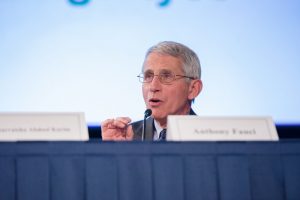
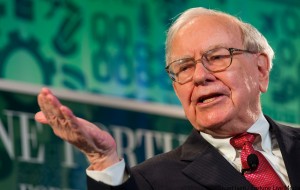
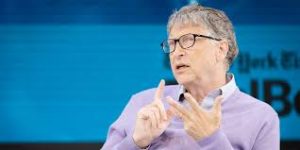
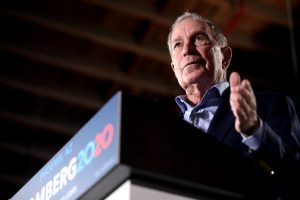
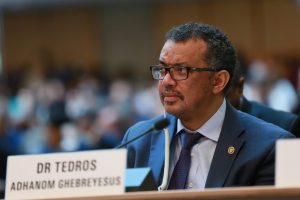
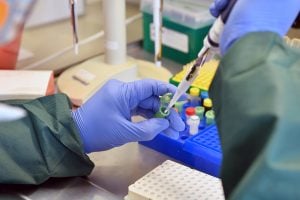

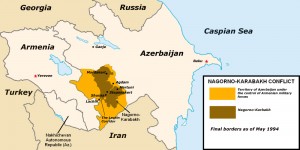
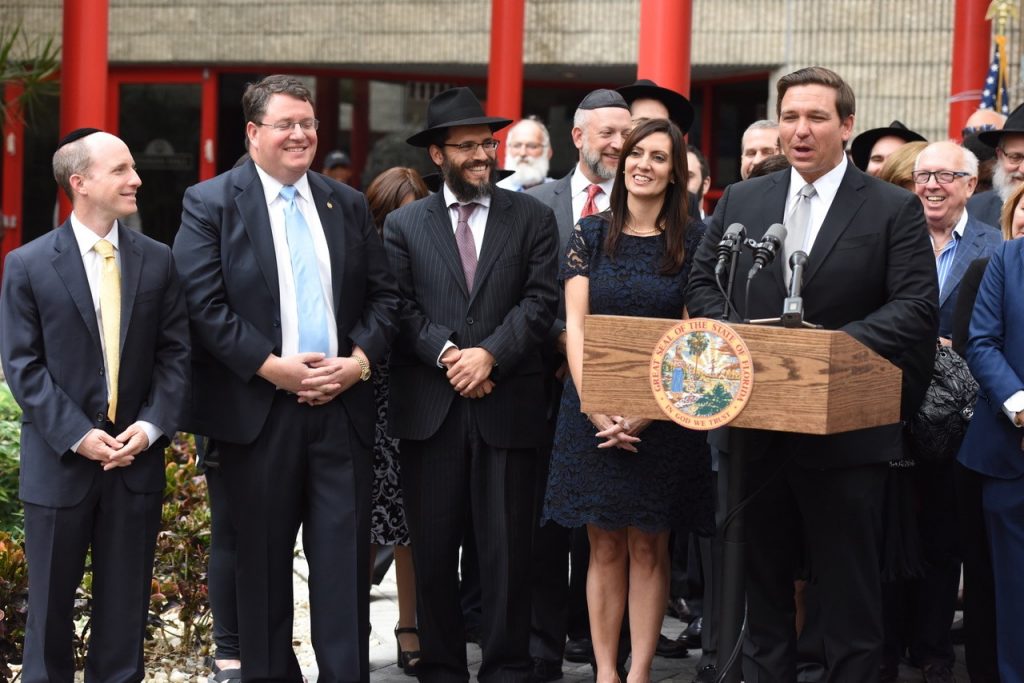
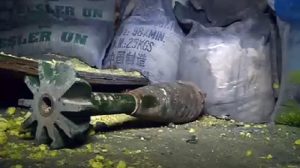

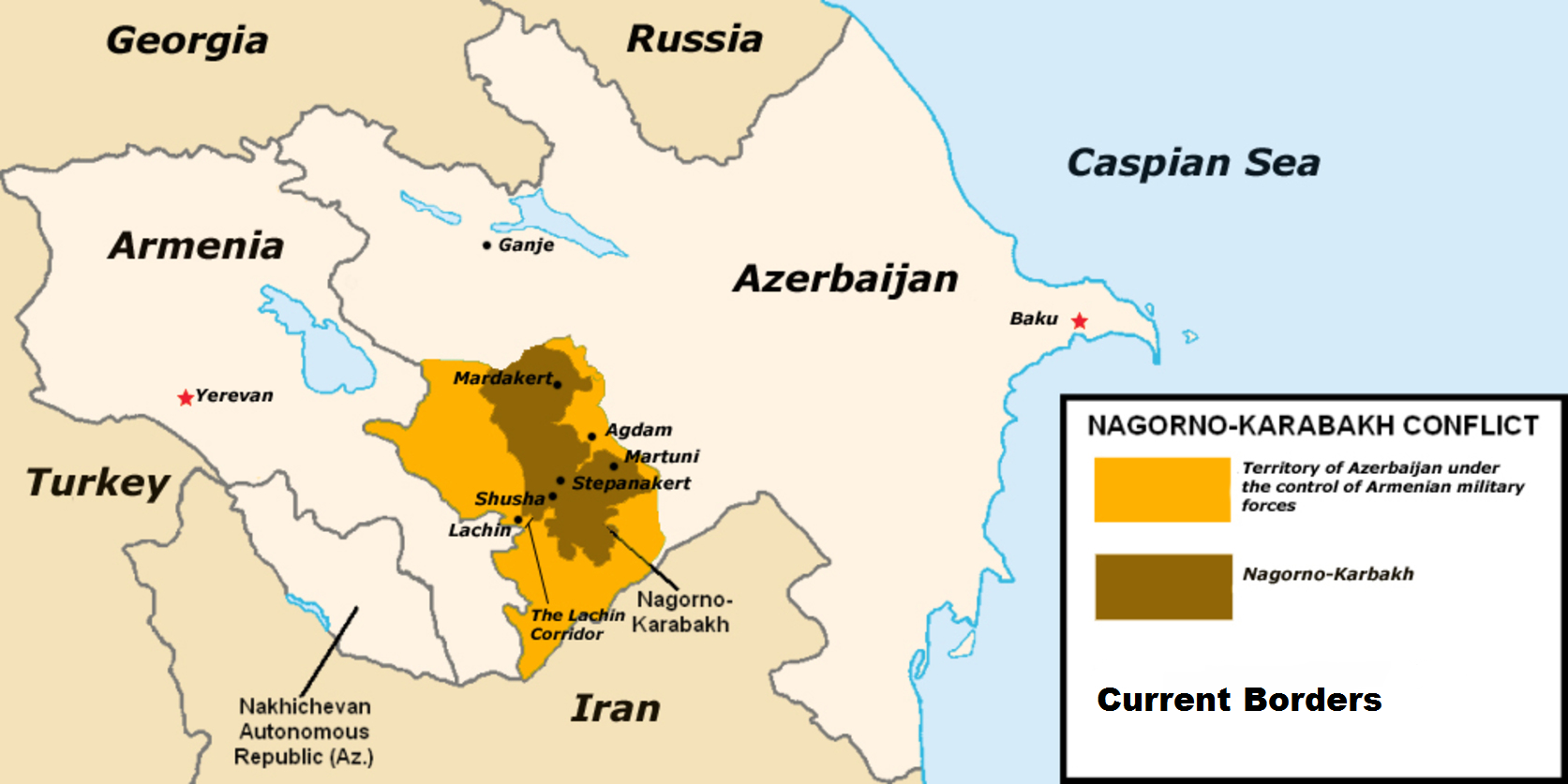
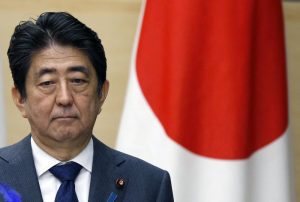

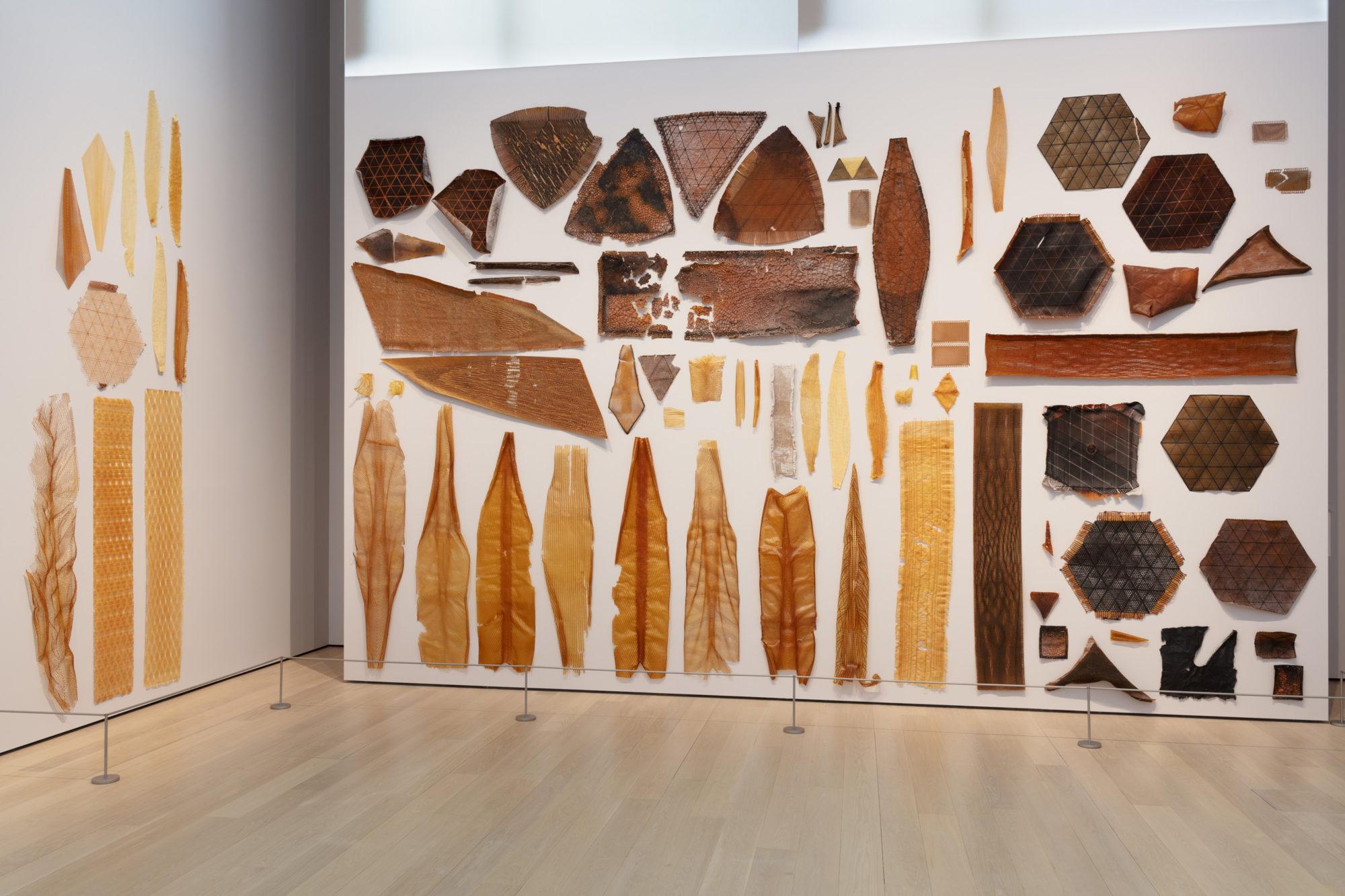




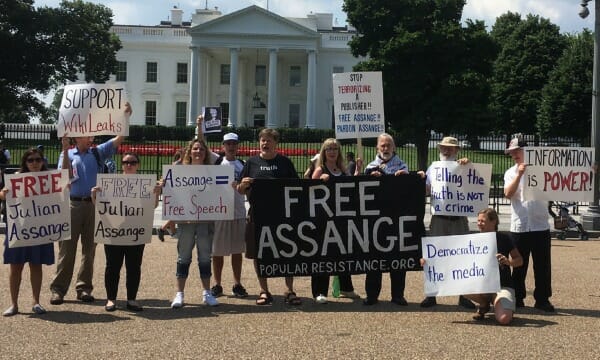
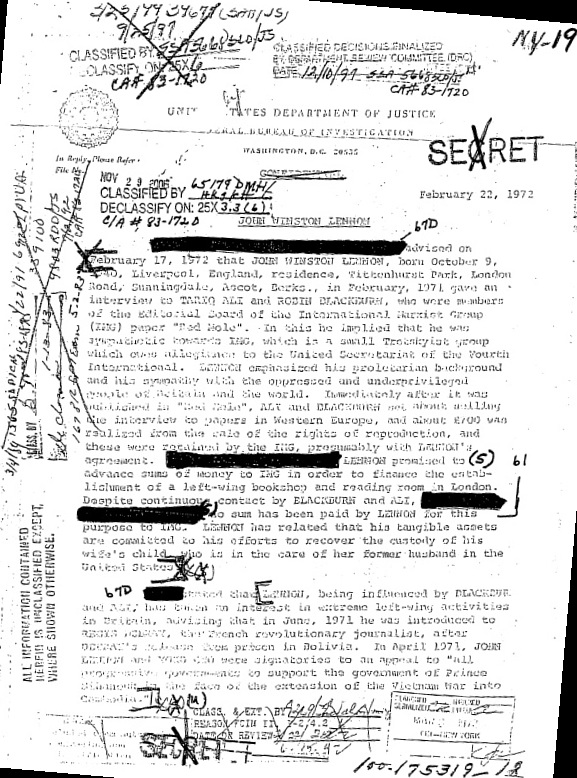





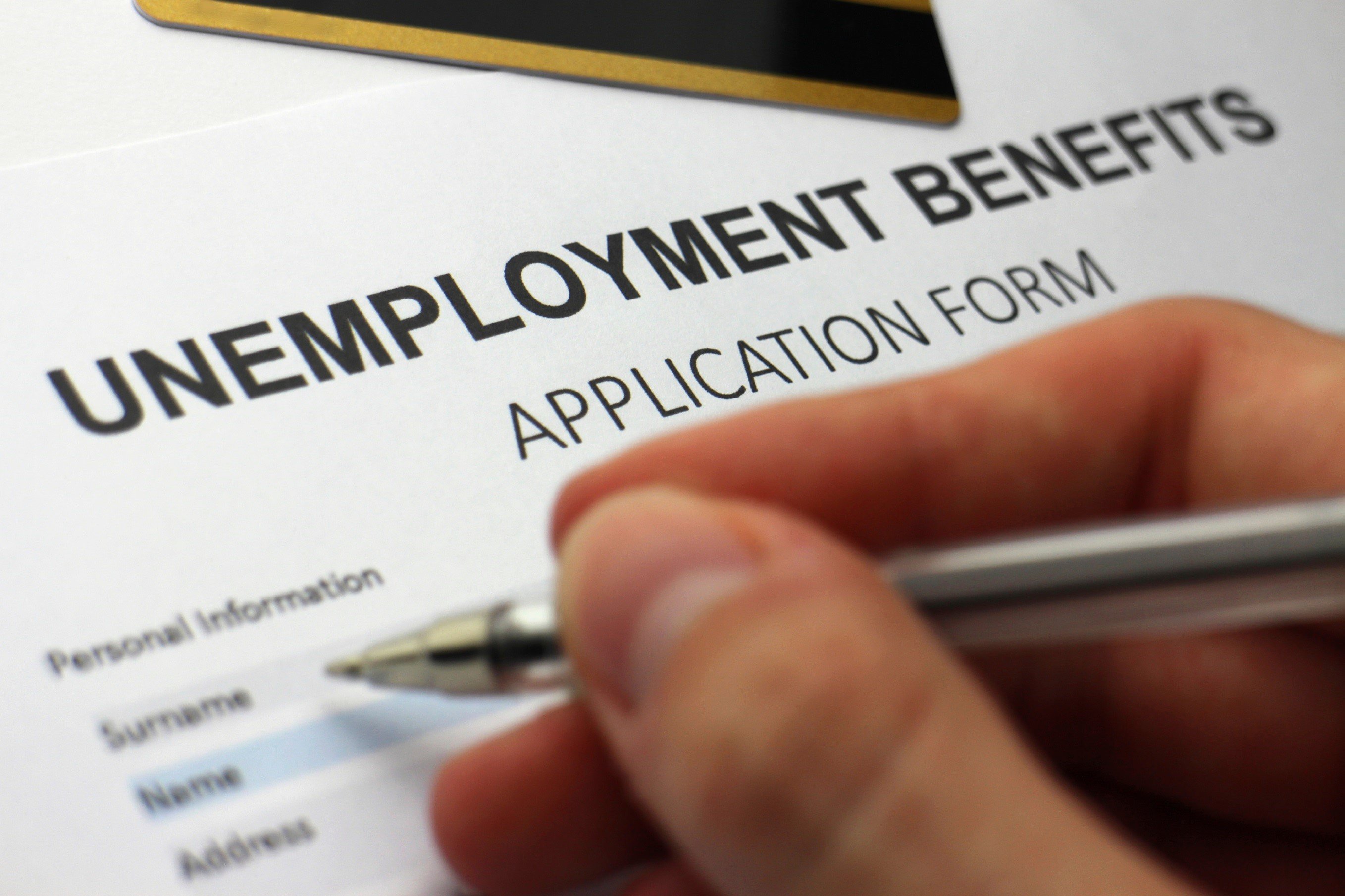 In the US, “more than 30 million people, over 15% of the workforce, have applied for unemployment benefits… ” (
In the US, “more than 30 million people, over 15% of the workforce, have applied for unemployment benefits… ” (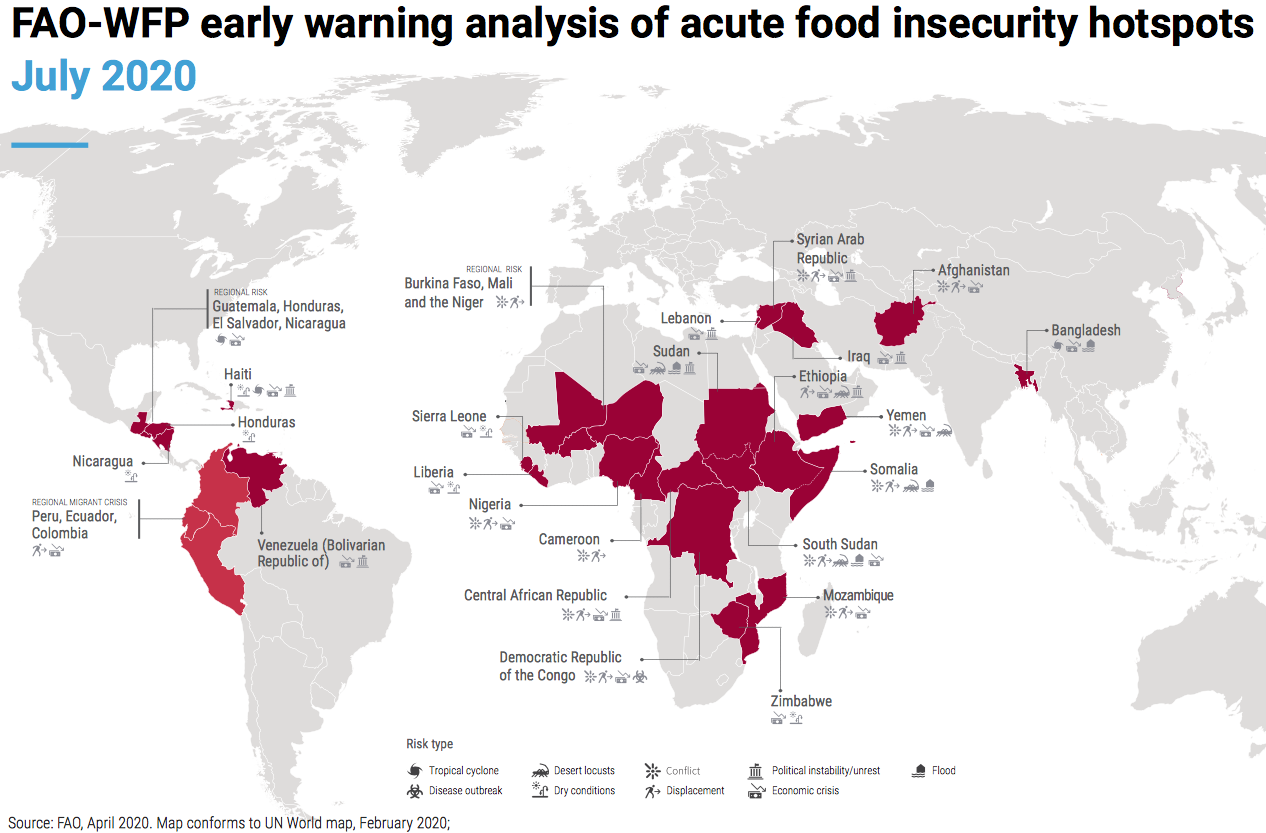
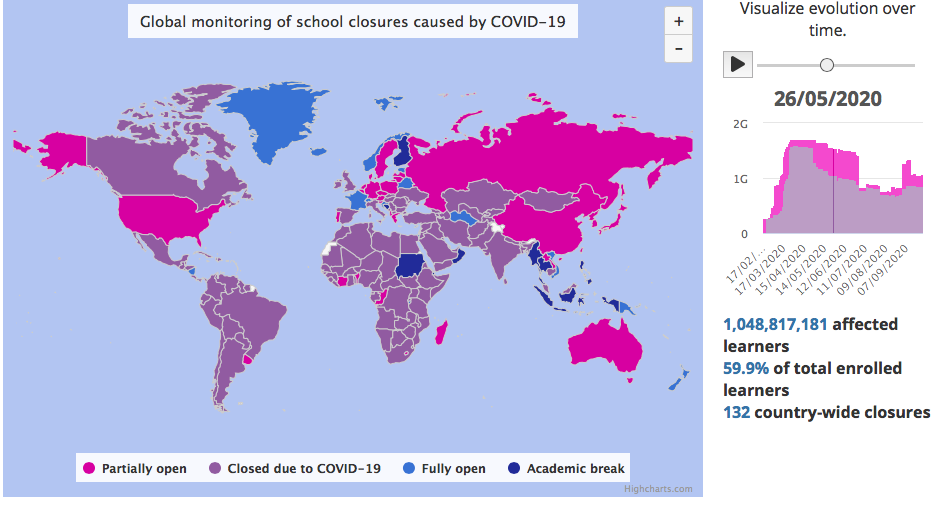
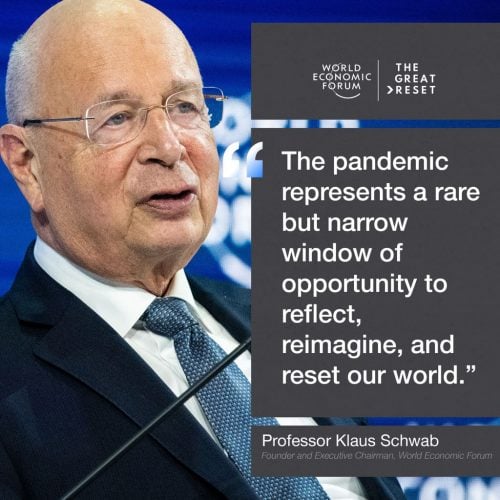
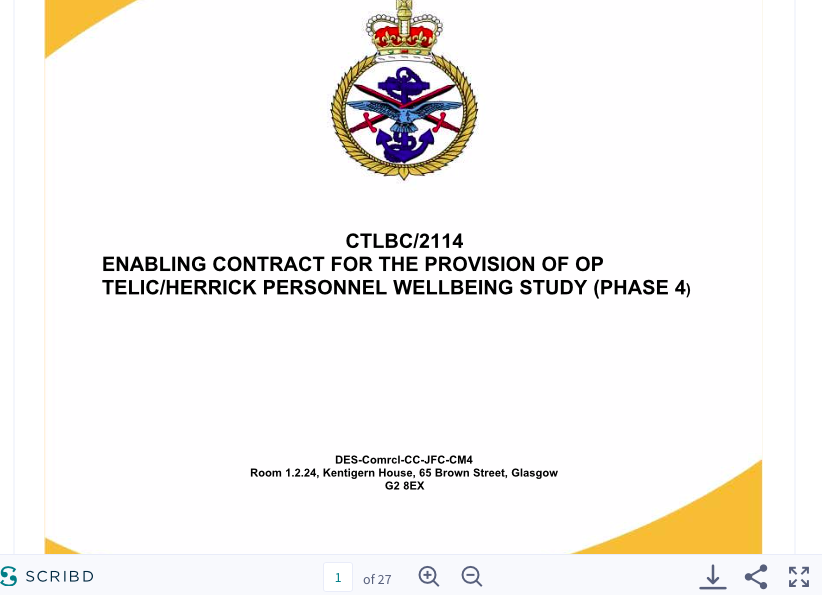
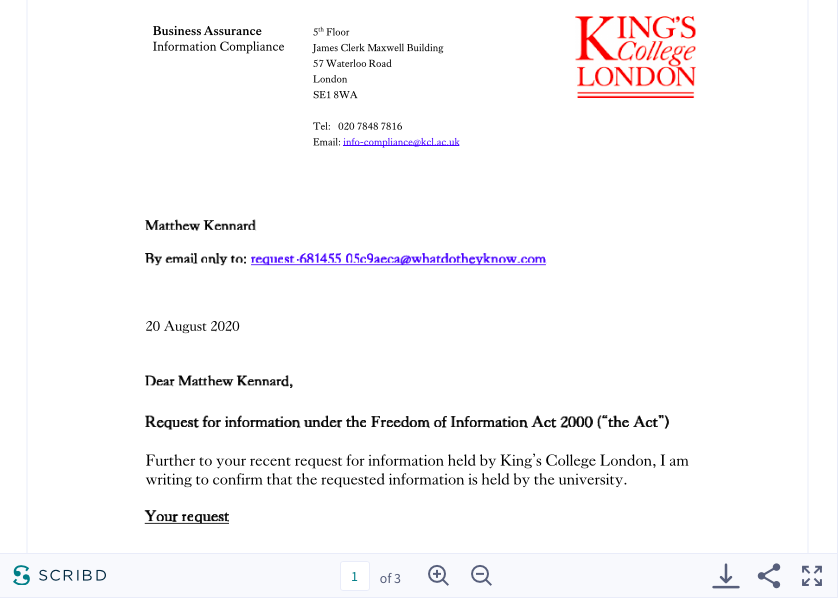

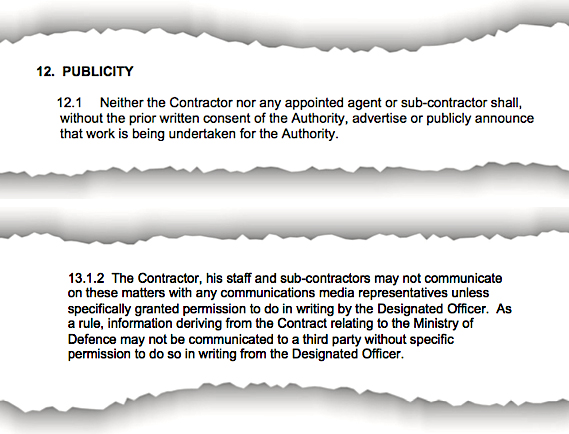
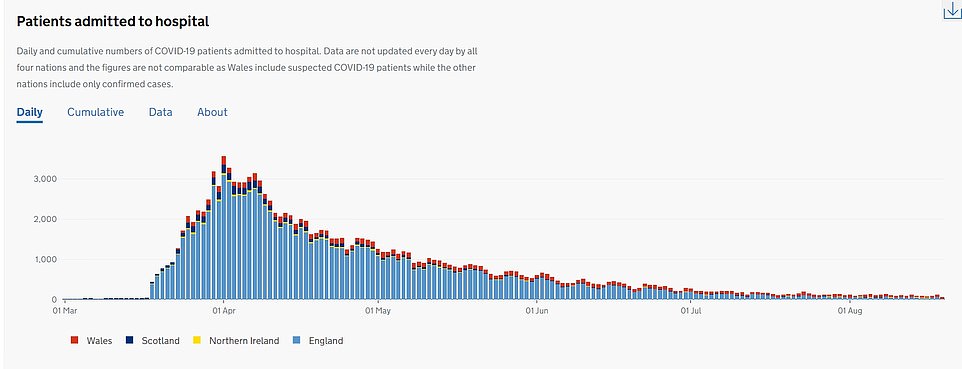
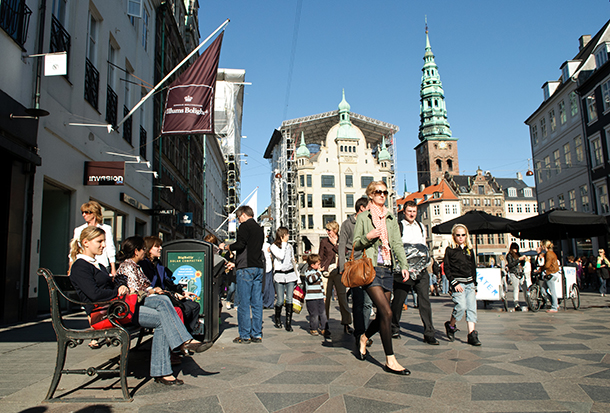


 (Stormfront’s motto is: “White Pride Worldwide”)
(Stormfront’s motto is: “White Pride Worldwide”)
